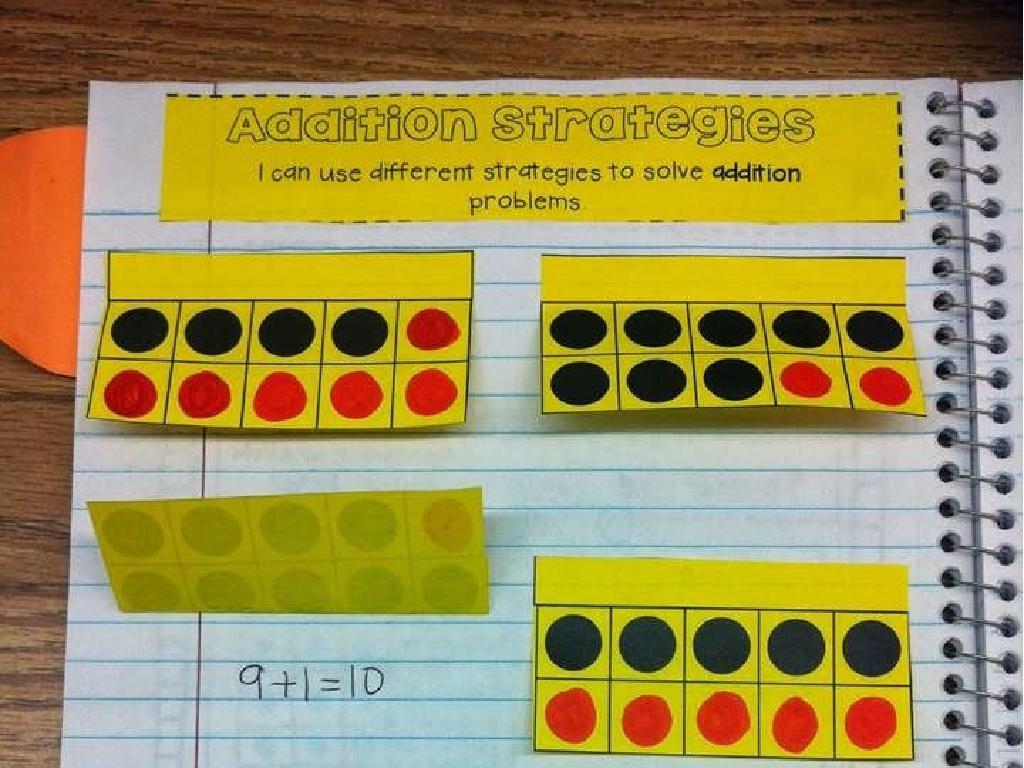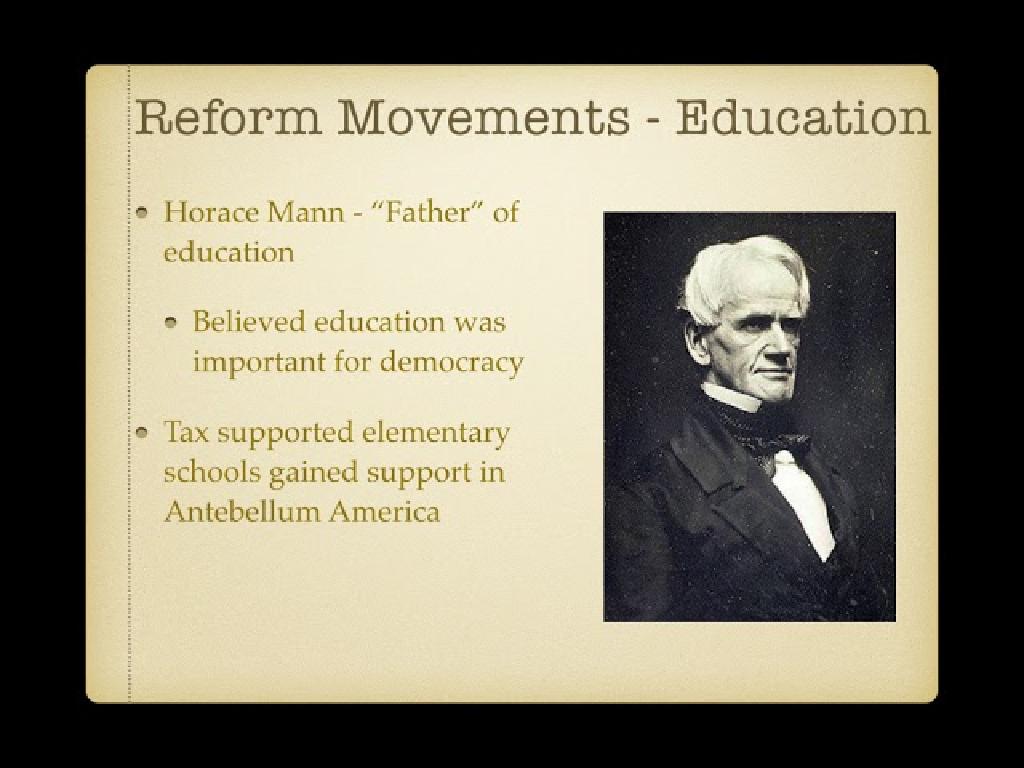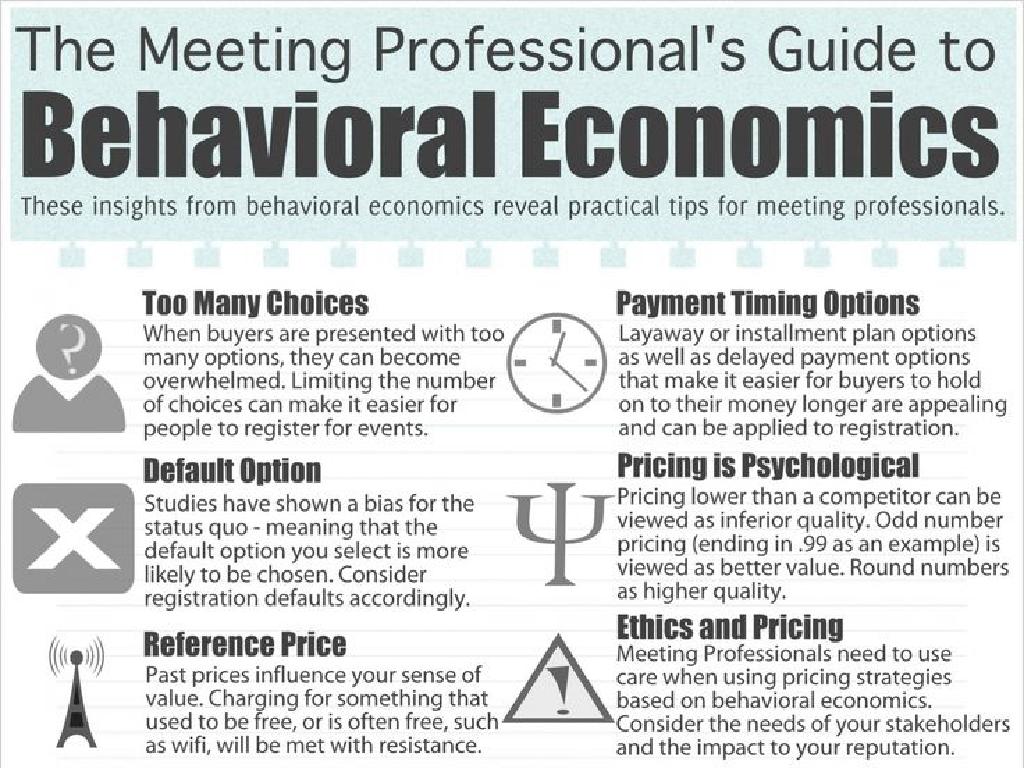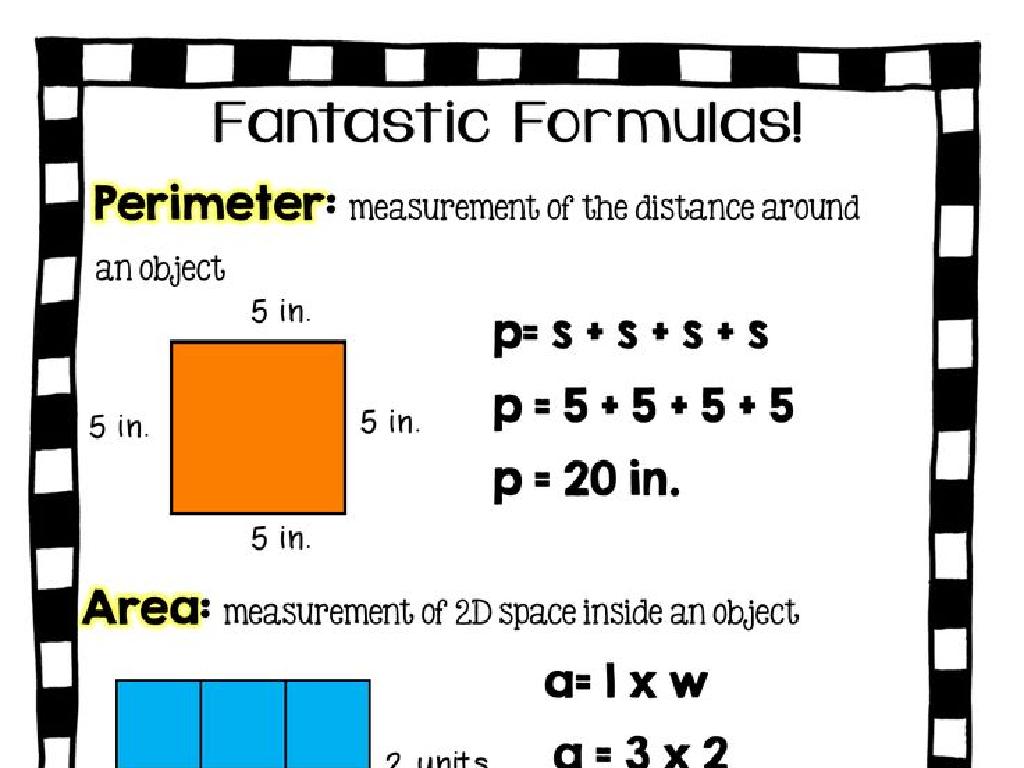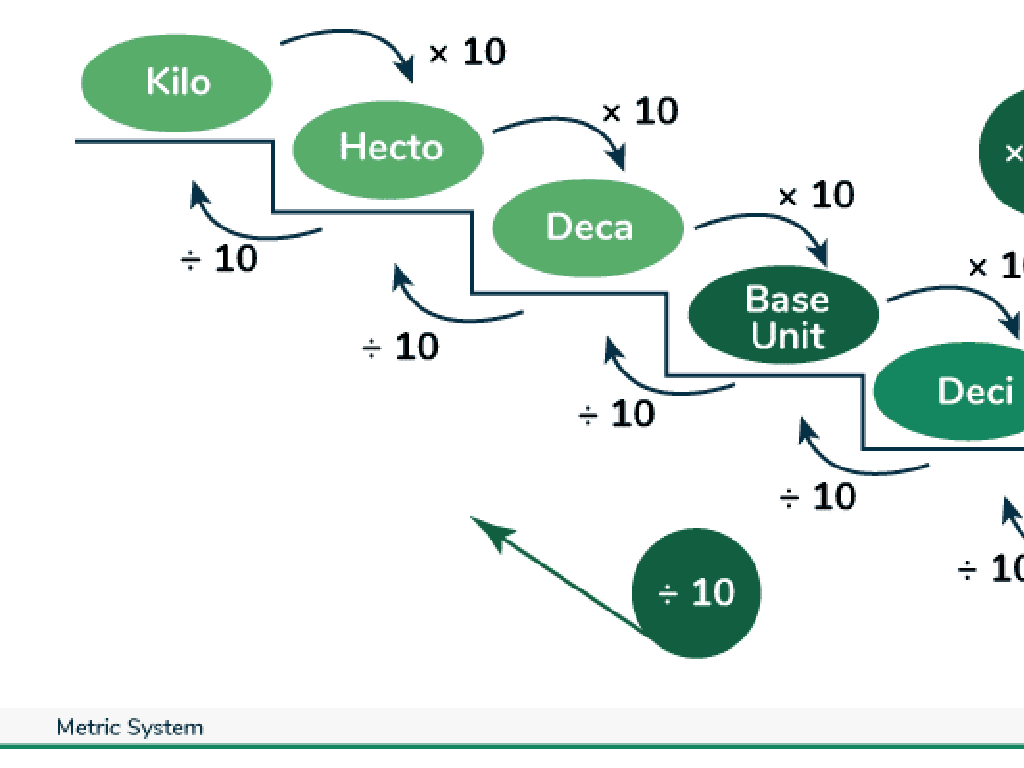Match Causes And Effects In Informational Texts
Subject: Language arts
Grade: Eighth grade
Topic: Text Structure
Please LOG IN to download the presentation. Access is available to registered users only.
View More Content
Understanding Text Structure: Causes and Effects
– Explore text organization
– Learn to match causes and effects
– Identify reason (cause) and result (effect) in sentences
– Comprehend the ‘why’ behind events
– Example: ‘Because it rained, the game was canceled.’
– Grasp importance in comprehension
|
This slide introduces students to the concept of text structure, focusing on how authors organize information by matching causes and effects. Understanding this structure is crucial for reading comprehension, as it allows students to grasp the relationship between events and their outcomes. Encourage students to look for key words such as ‘because’, ‘therefore’, and ‘as a result’ to identify cause and effect in texts. Provide examples and practice sentences to help them recognize these structures. Discuss why recognizing cause and effect can enhance their understanding of the material and improve their ability to summarize and analyze texts.
Understanding Cause and Effect in Texts
– Define ‘Cause’ and ‘Effect’
– ‘Cause’ is why something happens; ‘Effect’ is what happens.
– Everyday examples of Cause and Effect
– For instance, ‘Because it rained (cause), the game was postponed (effect)’.
– Identify signal words and phrases
– Words like ‘because’, ‘therefore’, and ‘as a result’ often signal cause and effect.
– Practice with sample texts
|
This slide introduces the concept of cause and effect, which is a key component of text structure in informational texts. Start by defining ’cause’ as the reason something happens and ‘effect’ as the outcome or result of the cause. Provide relatable examples to illustrate the concept, such as natural events or daily activities. Highlight signal words and phrases that typically indicate cause and effect relationships in texts. Encourage students to look for these clues when reading. Conclude with an activity where students identify causes and effects in sample sentences or paragraphs to apply what they’ve learned.
Signal Words in Cause and Effect
– Identify cause signal words
– Words like ‘because’ and ‘due to’ hint at causes
– Recognize effect signal words
– Words such as ‘therefore’ and ‘consequently’ point to effects
– Practice with example sentences
– Find and highlight signal words in provided sentences
– Understand their usage in context
– Learn how these words connect causes and effects in texts
|
This slide aims to help students recognize and understand the function of signal words and phrases in texts, which indicate causes and effects. By identifying words like ‘because’ and ‘due to,’ students can pinpoint the reasons behind events or actions. Conversely, words such as ‘therefore’ and ‘consequently’ often reveal the outcomes or results. During the practice activity, students will work with example sentences to locate and highlight these signal words, reinforcing their ability to match causes and effects in informational texts. Encourage students to discuss how the use of these words enhances the clarity of the text and aids in comprehension.
Analyzing Text Structure: Cause and Effect
– Text structure enhances comprehension
– Understanding structure helps predict and analyze information
– Cause and effect in text structure
– Identifies reasons behind events or actions and their outcomes
– Read and analyze a paragraph
– Find a paragraph in class, identify cause and effect
– Discuss paragraph as a class
|
This slide aims to help students understand how the organization of a text, specifically through cause and effect, aids in comprehension. Emphasize that recognizing text structure allows readers to better anticipate and interpret the information presented. Discuss the significance of cause and effect, which shows the relationship between events or actions and their subsequent results. Practice reading a paragraph together in class, identifying the cause and effect within it, and then open up a discussion for students to share their insights. This interactive approach will reinforce the concept and improve analytical reading skills.
Matching Causes and Effects in Texts
– Exercise: Match Cause & Effect
– Significance of Matching
– Understanding causality improves comprehension and critical thinking.
– Group Activity: Pair & Find
– Work with a partner to identify cause and effect in a given text.
– Discuss Matches as a Class
– Share findings with the class to learn from different perspectives.
|
This slide introduces an exercise aimed at enhancing students’ ability to identify and match causes and effects within informational texts, a key component of understanding text structure. Emphasize the importance of this skill for critical reading and comprehension. For the group activity, students will pair up to find and match cause and effect examples in a selected text. After the activity, facilitate a class discussion where pairs share their matches, explaining their reasoning and learning from others’ insights. This collaborative approach not only reinforces the concept but also fosters communication skills.
Class Activity: Analyzing Cause and Effect
– Read a short article together
– Identify causes and effects within the text
– Look for signal words like ‘because’, ‘therefore’, ‘as a result’
– Match each cause with its effect
– Use a graphic organizer to connect causes and effects
– Share and discuss findings with the class
– Explain your reasoning for each match
|
This activity is designed to help students apply their knowledge of text structure by identifying and matching causes and effects in an informational text. Provide students with a short article relevant to their interests or current curriculum. Guide them to look for key signal words that indicate cause and effect. Encourage them to use a graphic organizer, such as a T-chart, to visually match each cause with its corresponding effect. After the individual or group work, have students share their findings with the class, discussing the rationale behind their matches. This will foster critical thinking and analytical skills, as well as provide an opportunity for peer learning.
Real-World Connections: Cause & Effect
– Cause & effect in news
– How events lead to news outcomes
– Historical events’ analysis
– Look at past events to see the outcomes they led to
– Homework: Analyze an article
– Choose a current news article, find and write down its causes and effects
– Understanding through examples
|
This slide aims to help students make connections between the concept of cause and effect and real-world applications. By analyzing news articles, students can see how events lead to certain outcomes, which is a critical skill in understanding media. Historical events analysis will provide a broader perspective on how cause and effect have shaped the world. For homework, students should find a current news article, identify the main causes and effects, and be prepared to discuss how these elements structure the information presented. This exercise will enhance their critical thinking and analytical skills, which are essential for comprehending complex texts.
Class Activity: Crafting Cause & Effect
– Create your own cause & effect scenarios
– Exchange scenarios with a classmate for review
– Offer constructive feedback on clarity and plausibility
– Discuss the realism of each scenario
– Are the scenarios believable? Could they happen in real life?
– Reflect on the use of cause & effect in writing
– How does understanding cause & effect improve our reading and writing skills?
|
This activity is designed to deepen students’ understanding of cause and effect within informational texts. Students will create their own scenarios that illustrate a cause leading to an effect, which will help them identify and use this text structure in real-world contexts. After writing, they will exchange their work with a peer for review, providing an opportunity for collaborative learning and critical thinking. The class will then discuss the realism of the scenarios, promoting engagement and reflection on the importance of plausible cause and effect relationships. The teacher should facilitate the discussion, ensuring that each student gets feedback and understands the value of cause and effect in effective communication. Possible activities include creating scenarios based on historical events, current news stories, or hypothetical situations.
Review and Reflect: Cause and Effect
– Recap of today’s learning
– Significance of cause and effect
– It helps us understand the relationship between events and outcomes.
– Next lesson: Compare & Contrast
– We’ll explore how different texts organize information.
– Reflect on today’s lesson
– Think about how identifying cause and effect enhances comprehension.
|
Today’s lesson focused on identifying and matching causes and effects in informational texts, a key component of text structure in Language Arts. Understanding cause and effect is crucial as it aids students in comprehending the logical flow of information, which is essential for critical thinking and analysis. In the next lesson, students will learn to compare and contrast text structures, further developing their ability to analyze and understand diverse informational texts. Encourage students to reflect on how today’s lesson can be applied to real-life situations and to anticipate the skills they will learn in the upcoming lesson.
Exit Ticket: Reflecting on Causes and Effects
– Write one new learning point
– List two cause/effect signal words
– Words like ‘because’, ‘therefore’ signal causality
– Share application of this knowledge
– How will this help in understanding texts?
– Prepare for class discussion
|
This exit ticket serves as a quick assessment of student understanding and retention from the lesson on matching causes and effects in informational texts. Students should reflect on one new thing they’ve learned about text structure, specifically related to cause and effect. They should also recall and write down two signal words that indicate cause and effect within a text, such as ‘because’, ‘since’, ‘therefore’, or ‘as a result’. Encourage students to think about how recognizing these signal words can aid in their comprehension of informational texts and how they might apply this knowledge in future reading assignments. This activity will also prepare them for a class discussion where they can share their insights and learn from their peers.

